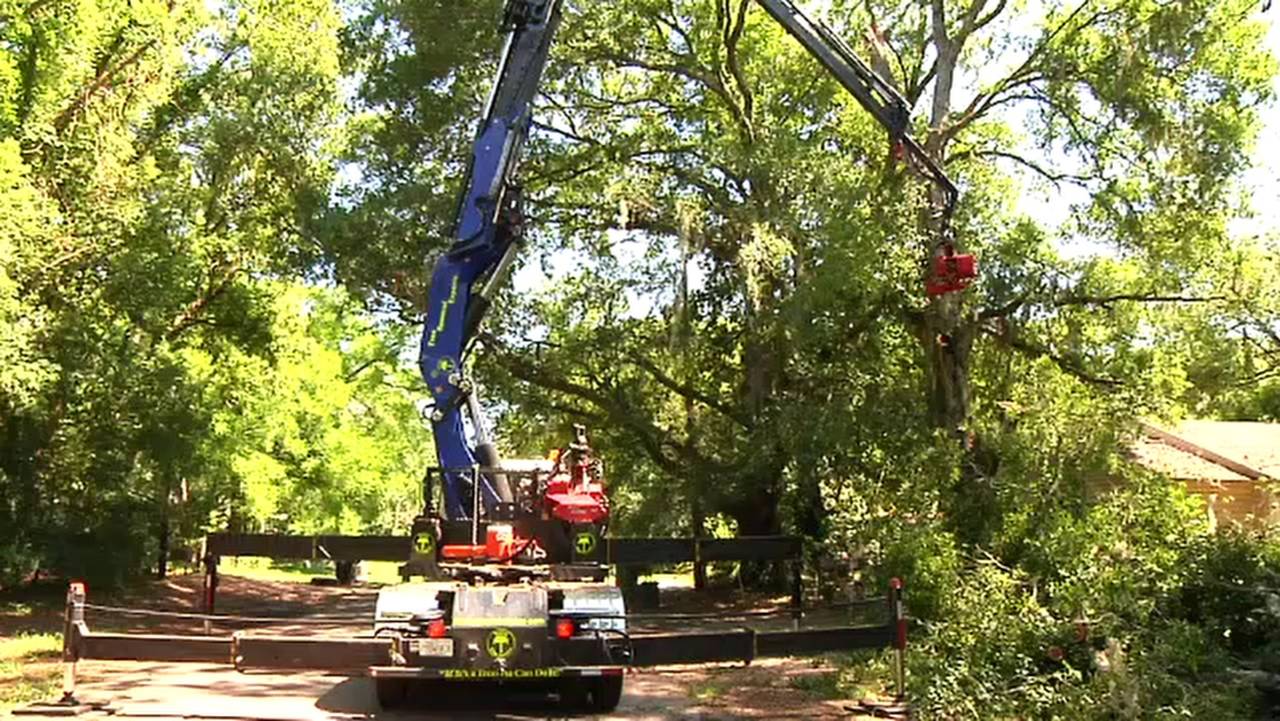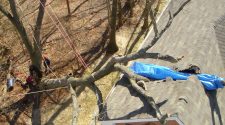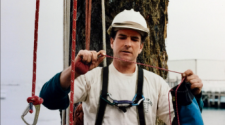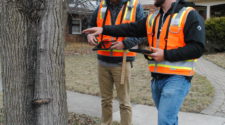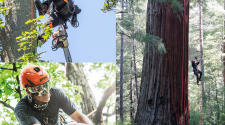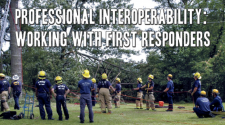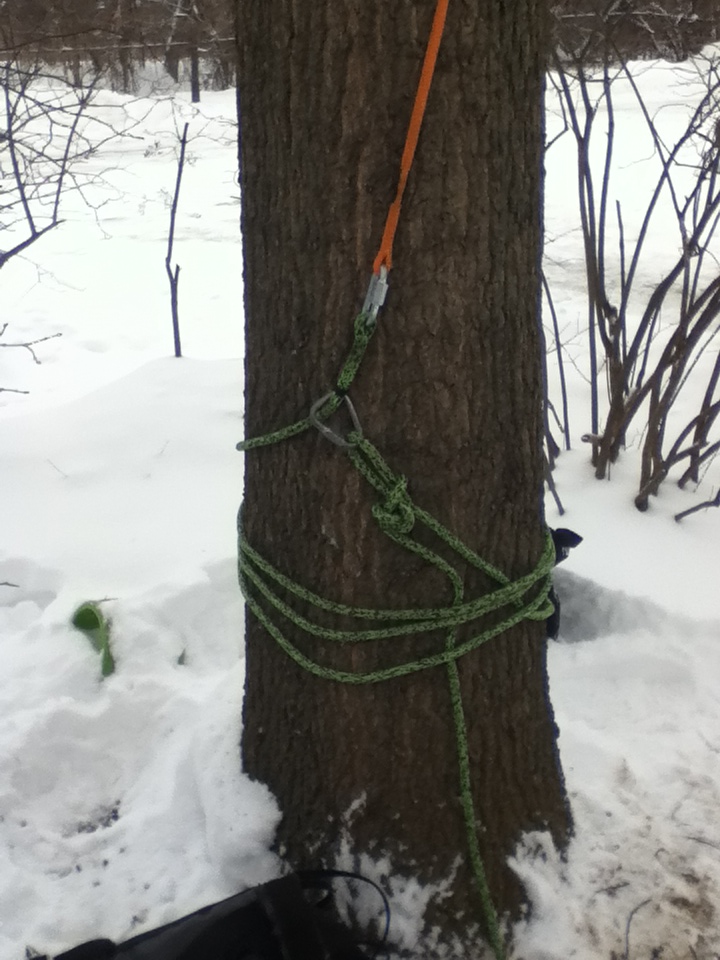Climbing and Rigging During Crane Use
By Todd Kramer, CTSP
At Kramer Tree Specialists, we have been using cranes almost daily for 25 years. When we started, we had no training, as it wasn’t available in the early ’90s. We simply learned from experience. Learning from experience is a necessary evil in our industry. Often, you must learn from your mistakes and successes. One limitation with learning from experience is that there is no lesson plan. If you are new to utilizing a crane or have never had any training, I would recommend seeking it out. There are many avenues available for training these days.
With an increase in crane use, there is, obviously, an increase in exposure and therefore an increase in accidents and injuries. With all the investigations I have researched involving crane accidents in our industry, at least three factors are consistently present. One is a lack of planning on the front end of the job. Another is a lack of communication on the job site. Finally, poor rigging is often part of the equation. For this article, I’ll focus on the responsibly of the climber/rigger while performing crane work.
Climbing
Over the years, I’ve heard so many times that climbing with a crane is easy. Well, I’m here to tell you that it is not. You’re often dealing with larger saws, larger rigging equipment and so on. Plus, you’re often getting more trees or larger trees done in less time, so you’re basically doing more.
So let’s start at the beginning. The crew arrives at the job site and the planning on the front end is spot on. You have all the correct equipment and the crew is competent and trained to do the work. So where do we begin? One of the skills I see lacking in our industry is a solid job briefing. A well-performed job briefing is crucial in our line of work. This becomes more apparent when performing crane work because the consequence of a failure is great.
The crew should start by identifying all hazards and obstacles and have a plan to mitigate them. The crew then should identify the equipment placement/landing zone. During the discussion, the crew should identify a work plan and a communication plan for all.
Communication during crane work is essential. The climber and the crane operator need to interact with each other. Some groups use hand signals and that works; others use some form of radio communication. We integrated radio headset communication some years ago and have never looked back. It has greatly improved our performance.
We recommend the climber and operator communicate for every cut made. The climber needs to know the capacity of the crane after deductions. Keep in mind that, while removing trees with a crane, you are basically doing demolition work. Demo work is quite challenging for any crane work because you don’t know the exact weight of the load, there are no engineered rigging points and you are totally committed to the load. Once it’s cut, it must be right, and this takes communication.
Because of the risks with demo work, we recommend not exceeding two-thirds of the crane’s capacity at any time. While climbing, I like to communicate systematically with the operator. This means we do the same thing for every cut. First, I need to know the capacity of the crane. Then I tell the operator how much I think the piece weighs and how much to pre-tension
the load. After it’s cut, I want to know what it actually weighs so I can enter that into my database for future cuts. Systematically communicating during the entire job greatly reduces the risk of a failure.
Rigging
Now let’s talk about rigging. In my career, I’ve used all different types of rigging gear and techniques. As a climber and an operator, I prefer to use center-of-mass rigging. My goal is for the load to simply stay put after it’s cut. For the canopy, I prefer to use dead-eye rope slings, also known as spider legs. These are pieces of rope with a large spliced eye to hang on the hook. The rope is then adjustable to whatever length is needed. This makes it very easy to stabilize and balance loads. With slings of a fixed length, like nylon eye-and-eye or round slings, those lengths are fixed and it becomes difficult to equalize and balance the loads.
As a climber, I was always displeased when the load had lots of movement, as I feared a struck-by injury. As an operator, lots of movement or chasing a load is never fun; you could be worried about the load striking the climber or an obstacle. Plus, if the load is moving, it will cause dynamic loading that could put extra force on the crane, possibly overloading it. The goal with rigging is limited movement.
Now that the piece is rigged well, we need to make the cut. There are many types of cutting techniques that can be used. I only use a few. For vertical or nearly vertical wood, with the load equally rigged using two slings in opposing directions, I usually just make a straight cut. For most of the canopy, I use small step cuts. First, start with an undercut, then a top cut an inch or two closer to the stem. This creates a small shelf for the load to sit on.
For cuts that are near obstacles, I like to use a “V” cut. Mark Chisholm showed this to me. It creates a very large shelf, limiting movement in two directions. These two cuts need to bypass. This can be useful for the operator, as it gives him/her a chance to reposition the crane and get the boom perfectly centered over the load if necessary.
Work positioning
Finally, I’d like to talk about work positioning. This skill is often overlooked by the climber. Let’s start by referring to our ANSI standards. While performing any climbing, one needs to have two means of anchoring to the tree. This is for two reasons: first, if a climber needs to change to another anchor, they have the means to stay secured, and second, if operating a chain saw aloft, they need two points of connection.
Finally, while working on a spar with no limbs to anchor to, a climber needs to have a cinching anchor for their climbing system. This can be accomplished in several ways. One is to use an adjustable friction saver that is cinched up tight, so it cannot flip off the top of the spar. Another means is to use an SRS, or stationary rope system, and there are many ways to do this.
It is very important to have some type of anchor so the climber can easily self-rescue or another climber can easily rescue an injured climber. If you ever had any training on spar rescues, you know they are very difficult. During the planning process, I prefer to anchor to and climb the tree if possible. If that is the case, one thing to keep in mind is the placement of the load and your climbing system. The climber and operator should have a plan that keeps the load out of the path of the overhead climbing system. If the load were to strike the climbing rope, it could potentially injure the climber.
Also while planning, I try to leave material where I can have an overhead anchor or an opposing anchor. The idea here is to keep the bridge of my harness loaded instead of just using the work-positioning D-rings. When your bridge is loaded, it is physically easier to do the work, and I’m all for that.
Let’s keep in mind why injuries and incidents are happening: planning, communicating and rigging. If we concentrate on focusing on these issues, we should have better success.
You can find samples of rigging, cutting and work positioning on our YouTube page, “kramertrees.”
Todd Kramer, CTSP, is director of field operations/education for Kramer Tree Specialists, Inc., an accredited, 30-year TCIA member company based in West Chicago, Illinois.
This article is based on his presentation during a “Crane Crew Training” forum at TCI EXPO in Columbus, Ohio, last November. Another portion of that forum was the basis for the article by Travis Vickerson, CTSP, in this issue. The third portion of that forum is the basis of an article by Tim Walsh, CTSP, that will appear in the November issue of TCI Magazine. To listen to an audio recording of that presentation, go to this page in the digital version of this issue of TCI Magazine online, at www.tcia.org, under the Publications tab, and click here.


